Introduction
The oft-repeated legend of the Parker 51 pen is that it was the pen designed to accommodate a quick-drying ink, and not the other way around. Parker chemists were busy at work in the 1930s creating fast-drying ink that would dry within seconds upon contact with the paper. Unfortunately, such ink had the propensity to dry on the nib, with a formula that could dissolve celluloid pen material. Parker designed a hooded nib and a generous feed to accommodate the writing fluid. Meanwhile, DuPont’s new molding powder of poly-methyl-methacrylate (Lucite) was used to create a new material for the body of the pen.
The original Parker “51” Ink formula was highly alkaline, not suitable for other pens at the time, including Parker’s Vacumatic. The new ink was introduced in 1941, along with their “51” pen. Parker reformulated the “51” Ink, and released it in similar jars as Superchrome in 1948. Throughout this time, the company continued to produce Vacumatics, in addition to their regular line of Quink ink.
The corrosive pen-destroying power of Superchrome and Parker “51” ink is legendary. One only needs to talk with a pen restoration specialist, who can tell you a tale of many pens clogged with its dried residue. Furthermore, the Parker “51” Ink box is coated with warning labels proclaiming the harmful properties of this writing fluid.
Naturally, I set about trying to destroy a Parker 21 just to see what was inside.
The Results
I was initially attracted to the Parker “51” Ink primarily for its artwork on the box, with it’s bold colors and sharp lines. This is my first bottle of Parker “51” Ink, a very clean bottle, probably never opened. I have a bottle of Superchrome. Both bottles are rich with the characteristic sediment, and light isopropyl alcohol smell. The “21” pen was a later creation by Parker, but used similar materials to the “51” pen. Thus I ignored the heated warnings, added a little water to the jar, broke up the sediment as best I could, and filled my pen with carefree abandon. Only a fool would use 70-year-old infamous ink with sediment on the bottom. I am such a fool.
Much to my surprise, the ink handled extremely well. It dries almost instantly, within 3 seconds on finer papers, faster on cheaper bonds. There is no concern for smearing the ink with my hand. The ink dries as it bleeds into the paper, instead of drying by evaporation on the paper surface. Thus bleeding and feathering is a bit characteristic for the ink. With a finer point pen, like the ”51,” there is hardly any notice of this. At first, I found the feathering a bit irritating, especially on the cheaper grades of paper (in some cases, it looked like I was writing with a Sharpie marker). But the instant drying time was such a major draw, that I dismissed any problems that I encountered. Some may be quick to call this behavior cellulose-binding: I’m too dumb to understand what that means. Call it what you will, it certainly stuck to the paper, and it remained there permanently. Water could not remove it. I’ll save the laser-cutter and blow-torch for another reviewer.
I was so excited by my discovery, I decided to load up a “51” with the same ink. Again, it handled very well. With a fine point and good feed, there was little issue with feathering. The ink writes dry, but it doesn’t feel chalky or rough. The ink doesn’t glorp (this is my own marketing-type catch-phrase) out of the pen, or skip or hesitate. Although towards the end of the fill, it started to skip, but there was no final ink-belch from the pen. The color was a bit gray-green, mostly gray, as I suspect that perhaps some of the blackness had faded.
For a minute, I stepped back and just admired the whole engineering process of what I had taken for granted for most of my life—that process called handwriting. While I have become a bit of a snob with flexible nibs and flourishy handwriting in my daily quotidian, I also understand that there is some degree of frustration and sacrifice that comes with having a flexible nib. It’s nice to pick up a pen and just jot something quickly through 6 leaves of carbon-paper without trying to receive validation from my handwriting or fancy-colored inks. It’s nice to not worry about ink glorping onto the paper, or drying in the feed.
When I step back and imagine life prior to the advent of the Parker “51,” I realize what a triumph it was to finally have a pen and ink system work so harmoniously that it redefined how people performed their daily routines. I realize why carrying a Parker “51” became a status symbol at the time. Of course, much of the hyperbole is lost on modern society conditioned on László Bíró’s invention.
Of course, there is a reason that the “51” pen outlasted the ink, and Parker reformulated it. This is not an ink for which you fill a pen, only to leave it sitting in a drawer unused for six months. That fast-dry feature can gum up a pen pretty quickly, and its known to etch away the matierials of the pen. If you choose to hunt down a bottle of Parker “51” Ink, realize that most bottles have dried out, and their contents have crystallized. Once you choose to fill a pen with this old ink, flush it thoroughly with water after the ink runs out. On second thought, just avoid the ink
Conclusion
Parker “51” Ink is for a Parker “51” pen. It’s permanent, which means its waterproof. It’s also resistant to electronic forgery, but not impervious to cosmic rays or plasma cutting torch. Its an amazing fast-drying ink that dries right into the paper, instead of remaining on the surface and drying with evaporation. It writes dry, but not chalky. It tends to feather on certain papers (I hate feathering). But I became accustom to its quirkiness, as the fast-dry feature was amazing. This ink was later reformulated by Parker to the Superchrome brand. From a personal perspective, I had a blast writing with it, just experiencing the nostalgia. But given its reputation as a corrosive solution, and the relative difficulty in replacing these pens, I probably won’t use it beyond the novelty phase.
 |
| Instructions from inside the box of ink. |

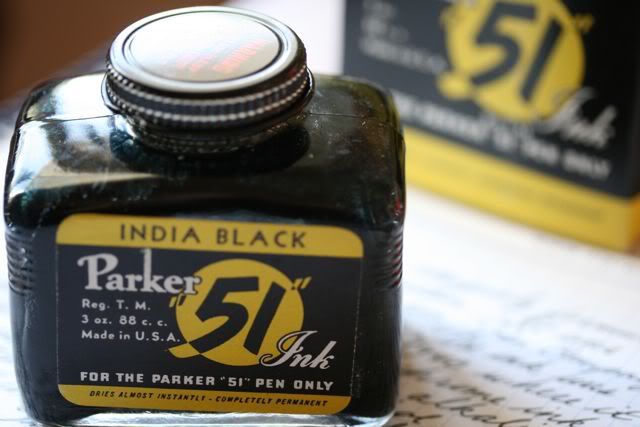
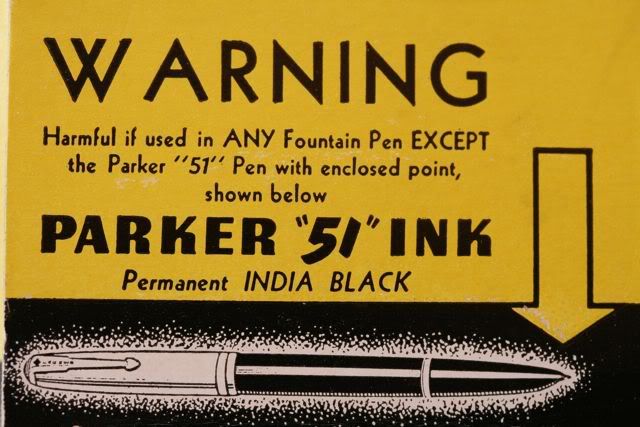
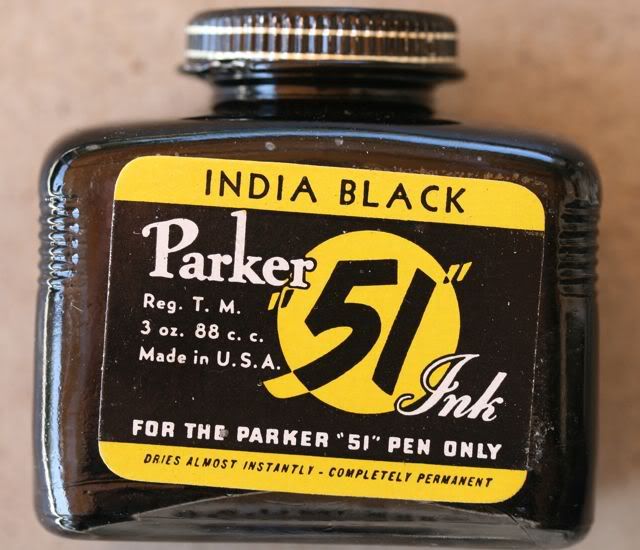
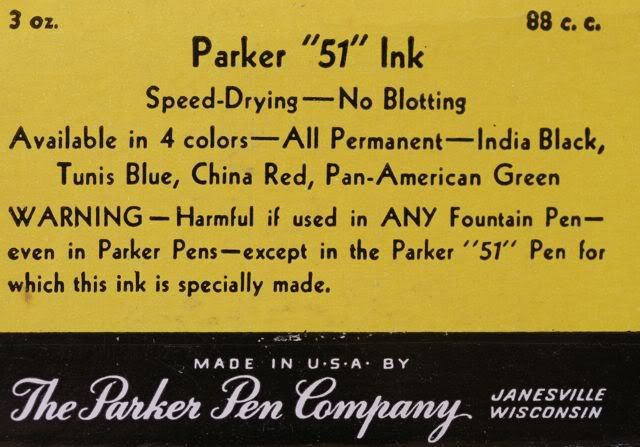
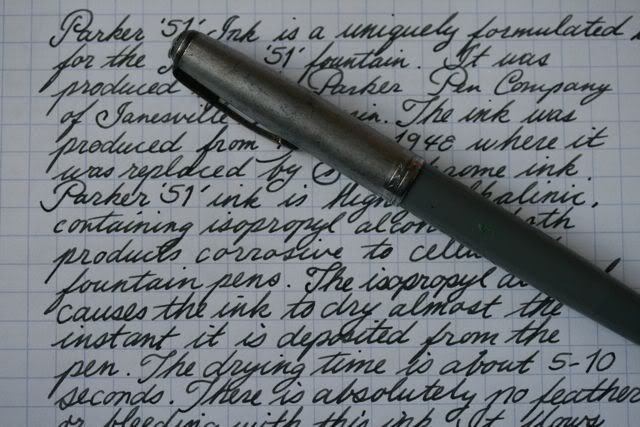

A must to check out. Buy Parker Pens Online
ReplyDeleteThis comment has been removed by the author.
ReplyDelete